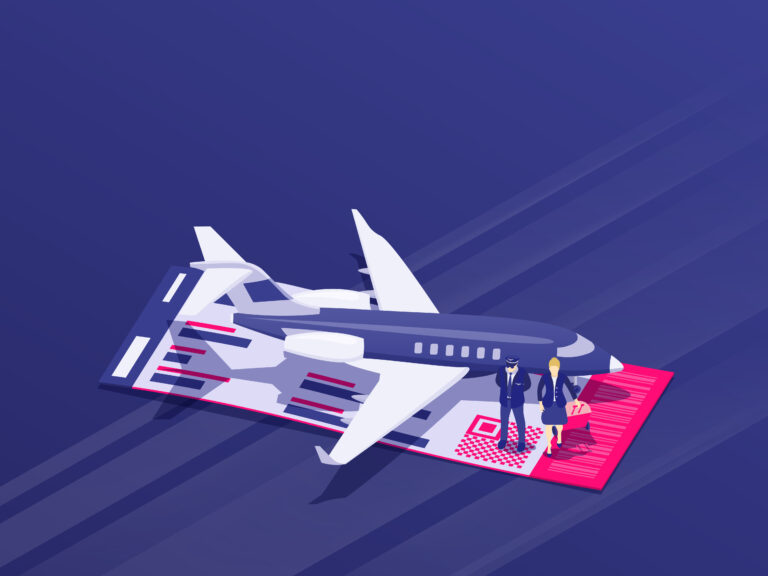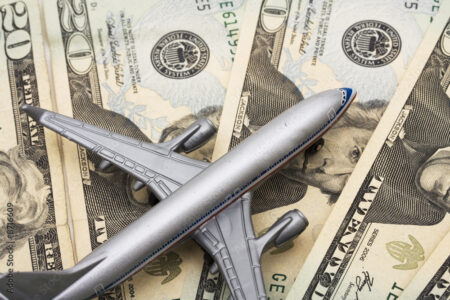With many private aircraft flying empty due to repositioning purposes, empty-leg offerings have been a solution in the industry to reduce or even offset costs. Many companies have begun to explore the opportunities and challenges these types of flights bring – from additional revenue streams to a change in customer perception.
It is calculated that 40% of private jet flights are empty return legs. These flights must return to the operator’s home base or reposition for another flight, creating an opportunity for customers and operators alike.
There’s one catch though, interested passengers can rarely define the departure time, date, and location – although they can leverage great discounts of up to 50% for each empty leg flight, with the operator aiming to offset the costs of that specific leg at least.
Economic pressures are pushing operators to resell these flights. As the charter market softens, some operators are taking risks on some charter requests, says Arthur Ingles, CEO of Moove, the French Software-as-a-Service business aviation marketplace.
“Many intermediaries see these flights as an attractive hook for potential clients — often used to capture interest, then upsell clients on more convenient travel solutions,” Ingles says.
Along the same lines, Chris Kuiper, CEO and founder of Catch-a-Jet, a platform that connects empty-leg supply and demand based in the Netherlands, thinks that the decision to use an empty-leg flight is mainly a financial call.
“Empty-leg flights are not only used by regular users but also by customers who might be financially unable to purchase a charter flight,” he notes.
Furthermore, an empty-leg deal is all about timing. Sometimes, passengers can get a decreased price for a popular route, depending on the flight cancellation or rescheduling. In essence, customers’ travel plans essentially depend on the needs of a flight route that you didn’t book.
David Gitman, president of Fort Lauderdale-based private jet broker Monarch Air Group, thinks that empty-leg flights can be a deal, but they’re not always the sure deal many people think they are.
“Major providers have been promoting empty legs as some golden ticket. Reality is, they’re often available when you don’t need them. It’s very important to understand they’re different from regular one-way pricing.”
Availability of empty-leg flights
While some may argue that the availability of empty-leg flights has increased in the industry, other experts, like Robert Plhak, CEO of VOO, the Austrian digital B2B marketplace disagree.
“The reason why it seems that there are more empty legs is because operators have realized how to take advantage of them. Years ago, operators just flew their aircraft from / to home base,” he says.
Similarly, FlyJets CEO Jessica Fisher, who leads the New York-based marketplace that connects flyers and aircraft providers, thinks that the market has begun to understand that empty legs are not just flights that can be sourced from others, on the schedule of others, but can actually be created among two parties or more.
“For example, if I’m going to Florida from New York tomorrow, and I have a friend coming back from Florida to New York on the same day, we may be able to find an aircraft that would otherwise charge round-trip pricing – even for just a one-way flight given the airplane needs to return to its home base at the end of the trip, and split the cost of the flight between us, thereby creating two empty legs.”
To meet this demand, operators are increasingly relying on aggregator platforms like FlyEasy, Avinode, and Charter Hub, says Cory Bengtzen, pilot and CEO of SkyShare, a full-solution private aviation company based in Salt Lake City.
“These platforms automate the process of matching empty legs with potential charter clients, improving visibility and ease of access,” Bengtzen notes.
From a passenger perspective, Gitman believes that your destination must align with the provider’s path to take advantage of the empty legs truly. “Places like the Caribbean see enough back-and-forth traffic in the winter that we can sometimes align an empty leg with the client’s needs, but those are pretty rare alignments.”
Pricing and revenue
Pricing strategies for empty legs are generally straightforward, shares Ingles, often set as a percentage of standard charter rates with basic rules based on the timing of the sale and the route length.
“While dynamic pricing would be ideal, our first step is using Smartleg Finder technology to auto-reroute flights based on matching rates. Another emerging strategy is selling empty legs by the seat. This is the focus of our new project with iJet and Euroairlines, where we distribute empty-leg seats through major OTAs like Skyscanner, greatly increasing match rates thanks to broader audience reach.”
Empty leg pricing only fluctuates once multiple parties demonstrate demand for empty legs or when there is a lack of demand for the flight – typically, notes Fisher, the discounts associated with empty legs are substantial enough that those associated with relatively high-traffic routes are sold fairly quickly. “In cases where they are not sold quickly, the flight price may decrease with time – the FlyJets system is set up to accommodate price changes such as these via our electronic marketplace and forthcoming exchange.”
In terms of revenue for the charter operator, Plhak states that while it could be up to 30, 40, 50%, or even more – it depends on many different factors. “The more interesting question would be, how much of a charter operator’s margin or profit can empty legs realistically contribute?”
For Kuiper, the pricing is the sole responsibility of each operator. “We still observe that some prices are too high. However, a majority of the flights are still significantly cheaper than charter flights and, in quite a few cases, cheaper than scheduled airline ticket prices.”
Interestingly, Plhak notes that some operators are fine flying empty because it’s paid anyway, while others want to make extra money to increase their margin or get paid a commission when they sell a pre-paid empty sector.
“Some fake positioning flights or empty legs get away from a bad spot they are stuck in for days. It’s difficult to say what the motivation of the operator side is to sell an empty leg. Operators have various ways to calculate them – the competition is always a factor that influences the operator’s strategy and calculation.”
Bengtzen sees empty legs as operators’ defensive move to offset some of the operational costs that would be lost with an empty cabin as the aircraft repositions for the next flight. “Empty legs are a way for aircraft operators to generate incremental revenue from flights that would otherwise be a sunk cost,” he says.
Targeting passenger experience
While traveling at a discount, empty legs are still marketed as the ultimate private jet experience. Even though the flexibility to control many of the variables that define this segment is not available when opting for an empty leg, passengers should expect the same treatment by operators from an experience standpoint than when chartering a full price leg.
In terms of the type of passenger who opts for these opportunities, empty legs are considered an entry point for many potential private aviation passengers.
First, some want to test the private jet experience but usually don’t fly privately, highlights Ingles. He suggests that these clients are flexible and might even share the cost with friends for a weekend getaway.
“Then there are private jet owners who, while hesitant about chartering due to costs, occasionally want to try a larger aircraft, like a long-range jet. Regular charter clients, however, typically need point-to-point flights, so empty legs don’t often fit their needs,” says Ingles.
In Plhak’s eyes, an empty-leg flight should not affect the service level on board or the passenger experience.
“Once again, such a flight could affect the flexibility, but any charter flight during high season allows less flexibility unless the client pays for extra flexibility that is agreed beforehand with the operator.”
Kuiper concurs. “I don’t think that operators treat customers of empty-leg flights significantly differently than customers who charter a private jet.”
Transparency is also key, whether servicing first-time flyers or experienced private aviation customers.
“Operators should be clear with customers about the nature of empty legs — that they come with less scheduling flexibility but still offer the premium private flight experience,” highlights Bengtzen.
Evidence suggests that empty-leg flights can mean additional revenue streams for operators. Paid but not yet flown repositioning flights are good, according to Plhak. “The more an operator gives discounts, the more bookings he gets. Overall, they increase their margin, reduce positioning flight time, and improve their taxi/ferry ratio.”
Expanding distribution channels through technology will be a significant driver, explains Ingles. “The taxi model will always necessitate repositioning sector and the associated tools that enhance efficiency of the overall mobility model.”
He adds, “As fractional ownership models and floating base fleets grow, we may see a reduction in empty flights in the future.”
For Fisher, one key piece of advice for operators just beginning to consider empty legs as a viable revenue stream is to ensure availability of aircraft for popular legs.
“Make sure to have critical mass on key routes to function not only as a provider of aftermarket empty legs but to be able to create empty legs between multiple parties at the onset of trips,” says Fisher.
Moreover, as technology improves, particularly in digital marketplaces, the future of empty legs could see increased accessibility, enabling a larger group of travelers to take advantage of private aviation at reduced prices.
“Future trends could involve better coordination between operators, brokers, and technology platforms, leading to more consistent availability and more dynamic pricing,” explains Bengtzen.
Finally, Gitman highlights the role that education and marketing strategies might play in customer expectations.
“As leaders in private aviation, we are responsible for providing factual, concise information about empty-leg flights. It’s time the industry dialled down the overstatement and sold its options responsibly, so customers understand what they are and aren’t getting. It is through transparency that trust is engendered, and our clients make informed decisions on their travel.”





